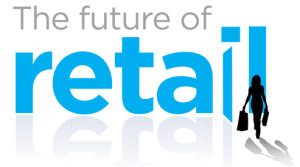Wealth for middle-income households has remained stagnant while upper-income household wealth has doubled in real dollar terms over the past three decades, according to Pew Research data. Factoring this data, high-end retail will likely prosper as the high-end population prospers, and commodity/mass-market retail will likely languish. Retail is still a top performer though, having the highest total returns of all property types in two of the last three years, and also having led the long-term performance measures of the ten-and 20-year time periods. Yet, lackluster retail sales growth, limited new store openings, continued store closures, and an overhang of crippled retail centers burden the shopping center sector. While investment prices for retail assets have risen 62% since the bottom of the Great Recession, they remain 7.5 percent below their prior peak (except for a few major markets which have done better).
Generally speaking, cap rates have compressed and transaction volume for retail has risen annually throughout this decade, with volume hitting $91.3 billion for the 12 months ending June 2015. Capital trends also give every indication that retail property investment activity will again be brisk in 2016.
Expect Main Street retail to outperform other submarkets due to the migration of people into urban environments. Also, as the demographic mix in the United States changes, so does its retail mix. Hispanic-themed centers are springing up, as 1/6 of the U.S. population identifies as Latino. Most major cities already have Asian ethnic enclaves with significant urban retail components. Other immigrant groups can be expected to claim their share of store area too.
The bricks vs. clicks debate continues to play out. All retailers are converging toward multichannel customer access. Physical stores have adopted e-commerce to compliment store operations, and internet retailers (even Amazon) are opening physical stores as a supplement to online sales. The commodity retailers of music, books, travel, and such will not likely return; but most major online retailers have yet to turn a cash profit (even in an era of minimal sales tax), despite their rising stock prices. At some point, they will have to earn a profit from operations to remain viable; and further increasing their market share from the current 9% will be slow dredging. The application of technology presents a bigger operational trend than merely e-commerce. Technology now enables almost any mall, store or retailer to see your personal preferences, and proximity, allowing it to transmit a custom-tailored message or coupon.
Tenant mix continues to evolve, as services not replaceable by the internet move to the fore – primarily food and entertainment, but also lifestyle. Millennials and boomers spend much of their disposable income on restaurants and food. Personal services like massage, dental, yoga and fitness, as well as entertainment, also remain necessary in a digital age.


